In the lore of Flesh and Blood, perhaps no class stands out quite so obviously as Mechanologist. Steeped in steampunk and cyberpunk aesthetics, the Mechanologist feels chronologically displaced alongside the swords and sorcery of Rathe. The choice to include a 'city of the future', full of engines and computers and robots, in the larger narrative of FAB could be seen as LSS' unique spin on the genre - and yet, Metrix has remained isolated and self-contained in a way that only reinforces the incongruity of the theme.
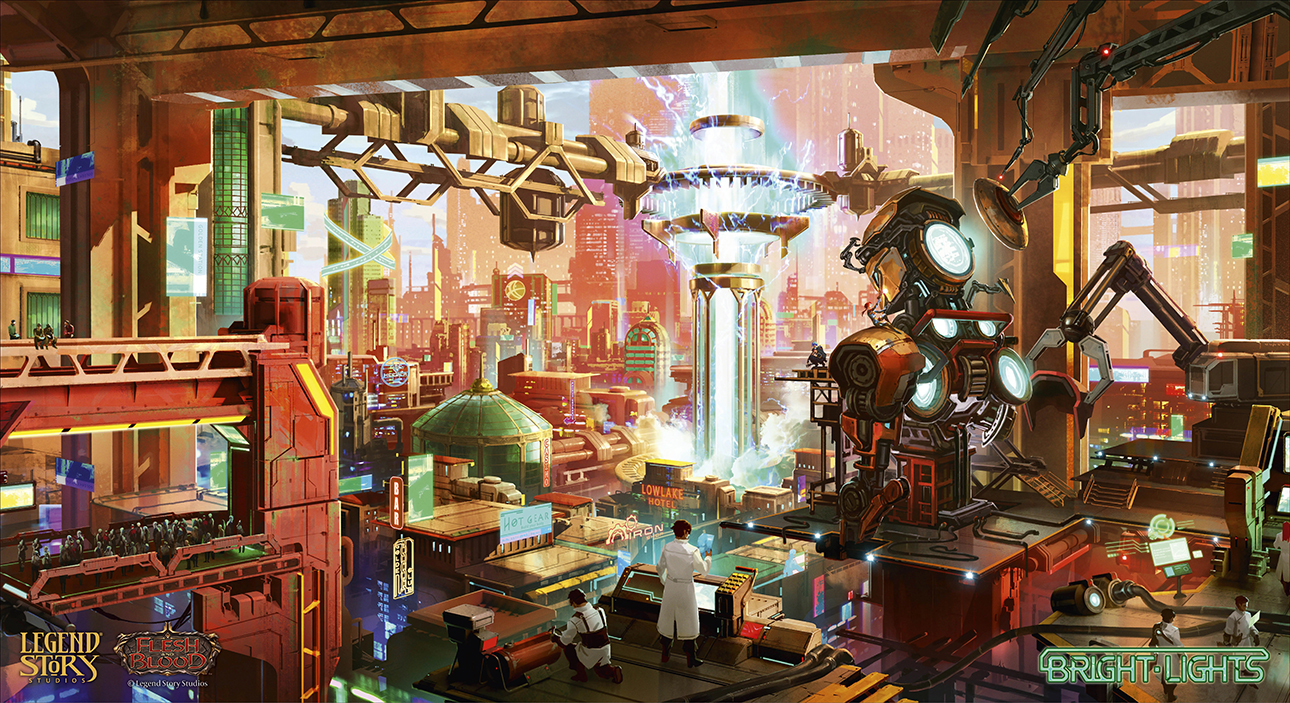
Fittingly, these truths apply to the Mechanologist class from a gameplay perspective too - brought acutely into focus by the Bright Lights expansion. A set focused entirely on one class, Bright Lights added strategic diversity to the high-tech heroes of Metrix without opening the class to outside card pools. While Outsiders and Heavy Hitters co-mingle their classes and Dusk Till Dawn reaffirms that, yes, there are still talents ready to modify those class tags, Mechanologists remain firmly siloed. Most Mechanologists hardly even consider generic cards.
Assassin aside, it's the only class that's never dipped its toe into the Talent pool (though for years, theories have circulated that, perhaps, Mechanologist is a Talent). It's been designed to be extremely insular, greatly preferring its own card pool. And when presented with a showpiece set fronted by three brand new heroes, Mechanologist invented new strategic avenues within its own class - even going so far as to introduce variant card templates to denote them - rather than venture outside the box.
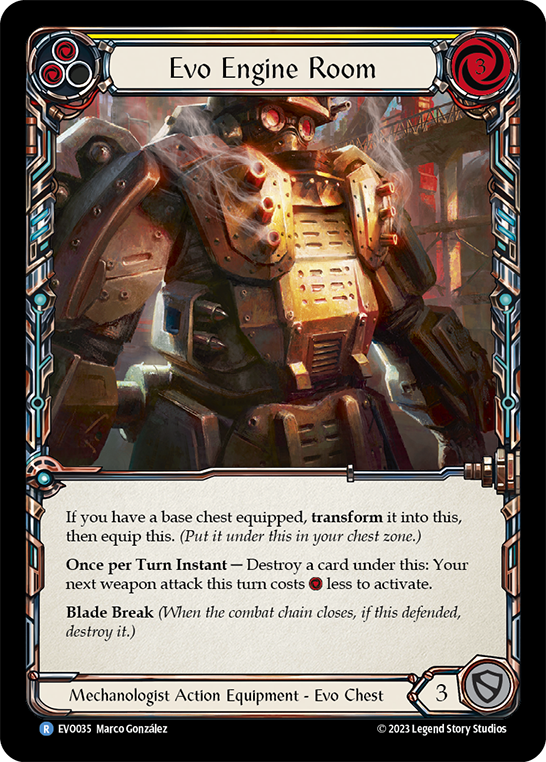
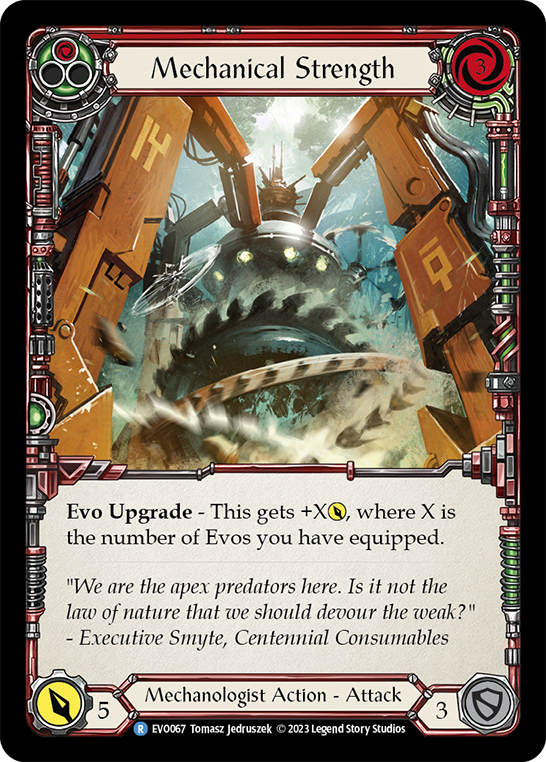
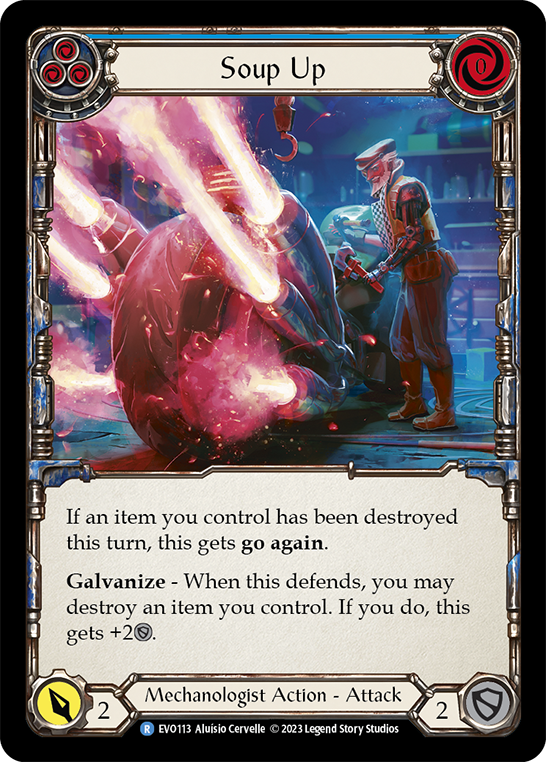
So what, exactly, is the design intent of Mechanologist?
Clues in our Characters
Any examination of a class has to begin with the heroes, and Mechanologist offers 6 distinct characters - trailing only Guardian (8) and Warrior (7) for the widest roster.
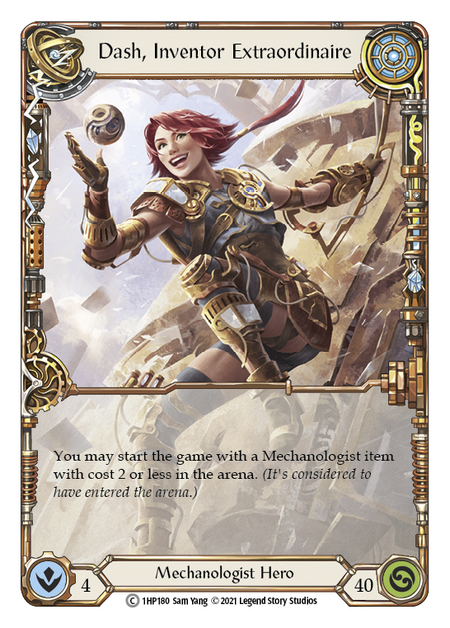
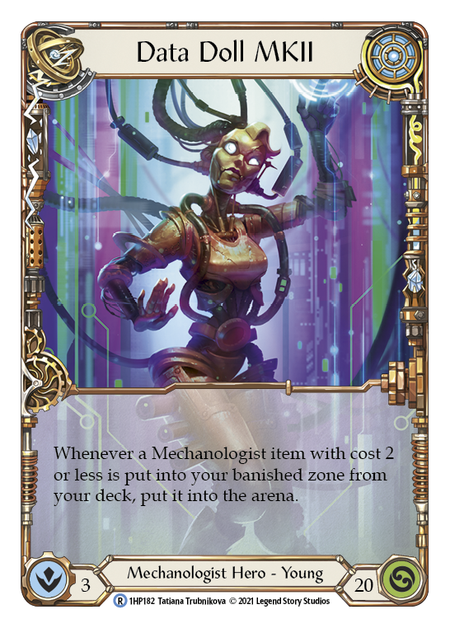

Dash introduced us to the class back in Arcane Rising, and for a long time it seemed like her modular hero power would be the thematic heart of Mechanologists. While firmly locked into pistol-building, there was potential for dozens of strategies to develop as new items were released. Data Doll seemed to reaffirm this 'build a hero' take, pushing it to an extreme brimming with so much novel potential, it earned DD the only 3 Intellect in the game.
And yet, with each new influx of Mechanologist cards, the items remained tech pieces that offered little to build around, and new weapons contained none of the Teklo Plasma Pistol's potential to act as a central strategy. Dash seemed stuck in beta.
After Crucible of War in August 2020, we wouldn't see another Mechanologist hero for 3 years, until Bright Lights released in October 2023. As if making up for lost time, Bright Lights (and the accompanying Round the Table boxed set) gave us 4 new heroes and a full set of support. So what did these heroes do?
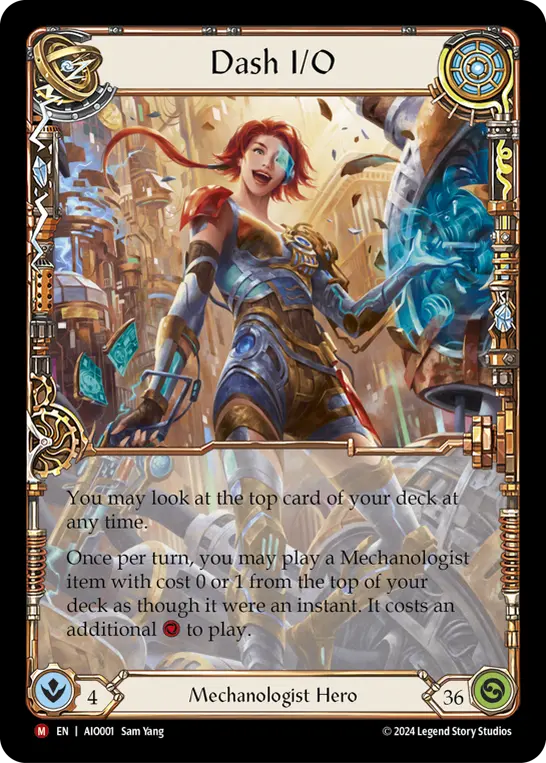
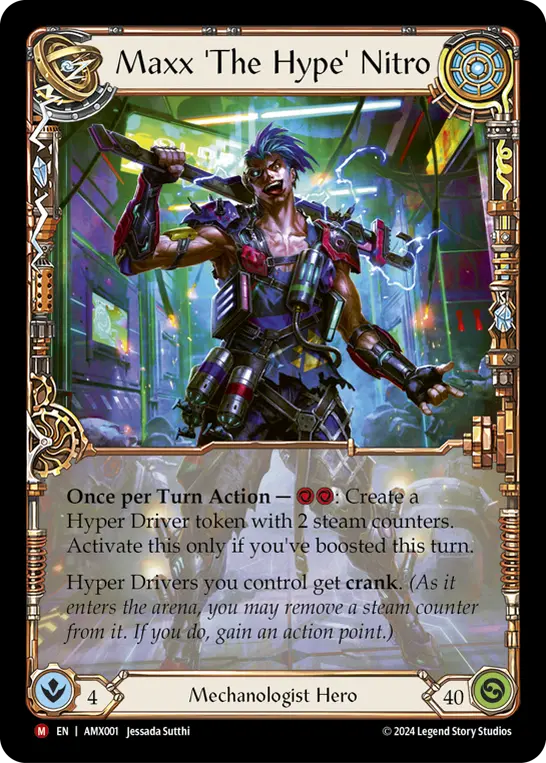
Well first, they split the Mechanologist of the past into two separate heroes. Dash I/O updated the item-focused strategy that felt core to the thematic idea of the class, but moved away from a pistol-builder into a wider board-state gameplan that finally utilized tech cards. Meanwhile, the boost mechanic - which was never codified in any hero's text but was practically omnipresent across the card pool - became the focus of a new character, Maxx Nitro, who moved the aesthetic of Mechanology from 'steampunk inventor' to 'cyberpunk biker'.
And yet, both heroes retain an aspect of the other, with Dash relying on boosting for the combative aspects of her gameplan and Maxx fueling his wide chain links via resource-generating items. And if these two heroes were all that we got, you might believe that Mechanologist was meant to be this, and only this, for all time.
But then there's Teklovossen.
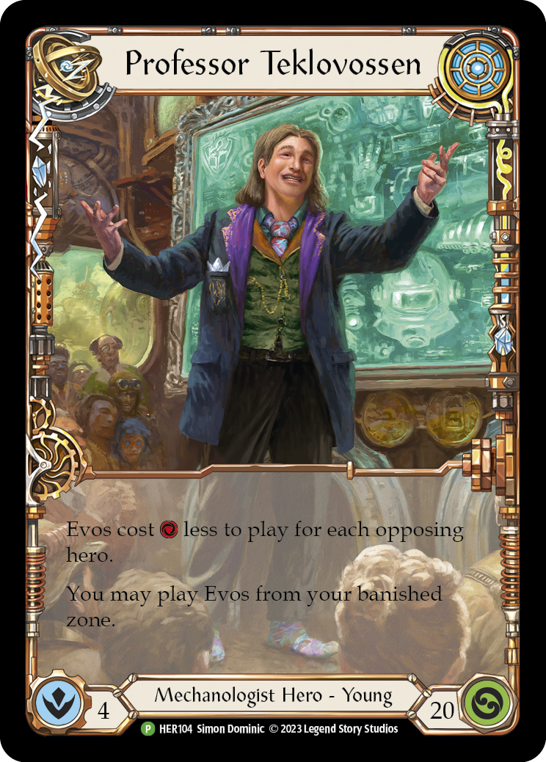
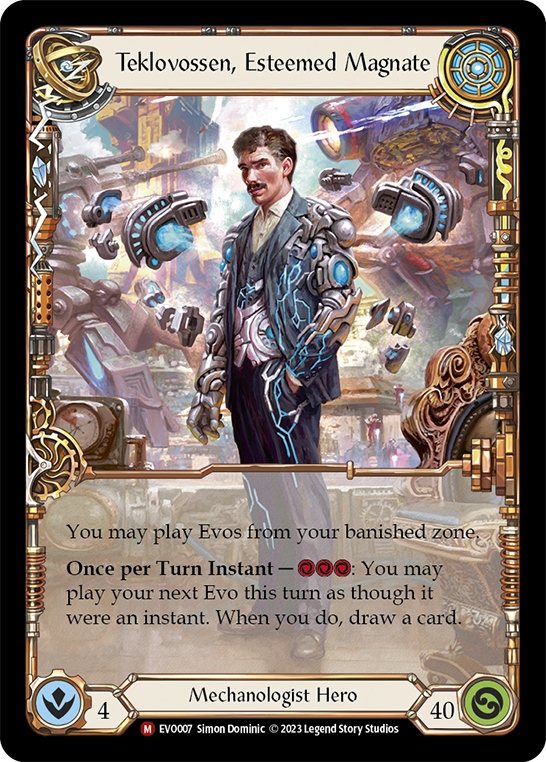
Beyond the new boost cards and the new items, Bright Lights had a massive third pillar it was built upon: in-deck equipment in the form of EVOs - a techy-sounding term that, as far as I know, has no real meaning but gets tossed around here like it does.
Editor's Note: It took some precise Googling, but I did find a Wikipedia article on Speculative Evolution as a subgenre within science fiction that defined Machine Evolution (Mech Evo) as "a subgenre of speculative evolution about machine life" - which seems to fit the FAB version pretty well.
These cards take the concept of 'build-a-hero' and 'build-a-pistol' one step further; now, you can build an entire equipment suite. And while EVOs were technically available to all the Mechanologists, they really only became a strategic centerpiece to the Teklovossens.
But before I get into that, we need to detour back to Dynasty and the completely objectively coolest thing Mechanology has to offer: the Nitro Mechanoid.
Assemble!
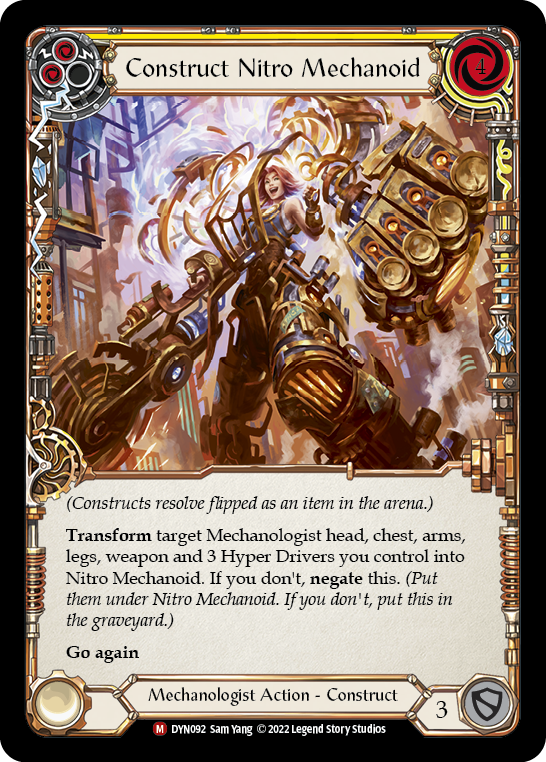
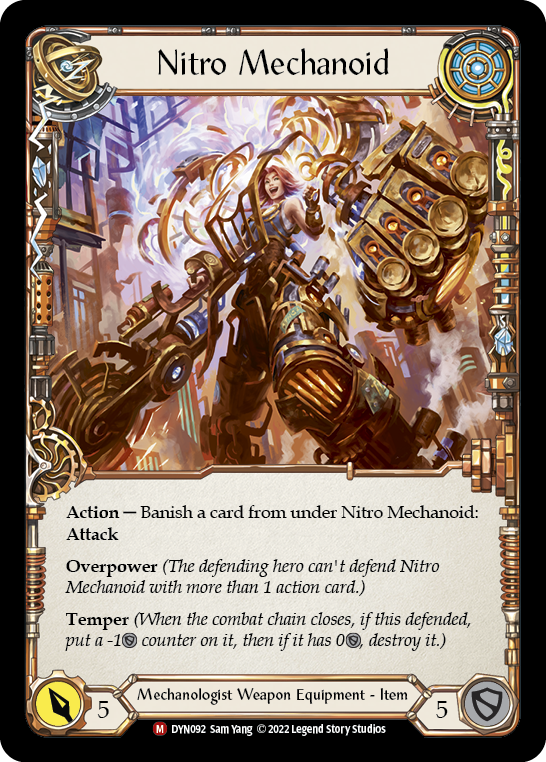
I said before that Mechanologist, as a class, had remained relatively strategically rigid from the time of its debut until Bright Lights, but there was one notable shakeup about a year earlier. In the midst of an expansion set, the Nitro Mechanoid made its debut as a splashy double-faced card with a cold foil, full-art marvel variant. In a taste of the EVO strategies to come, it asked you to amass 3 Hyper Drivers and combine them with 4 pieces of equipment and a weapon to, essentially, stick your hero in a frickin' mech suit.
...but Dash, Inventor Extraordinaire wasn't particularly good at it. And while you could force the issue - and believe me, I did - it was clear that this card was future-facing. Today, the Nitro Mechanoid has found a comfortable home in Maxx Nitro as a sideboard alternate and a closing strategy. (And next week, I'll make my case for a Dash I/O deck built around it.)
But the Mechanoid's true purpose seems to me to be thematic: it laid the groundwork for the concept of EVOs, Teklovossen, and the Mechropotent.
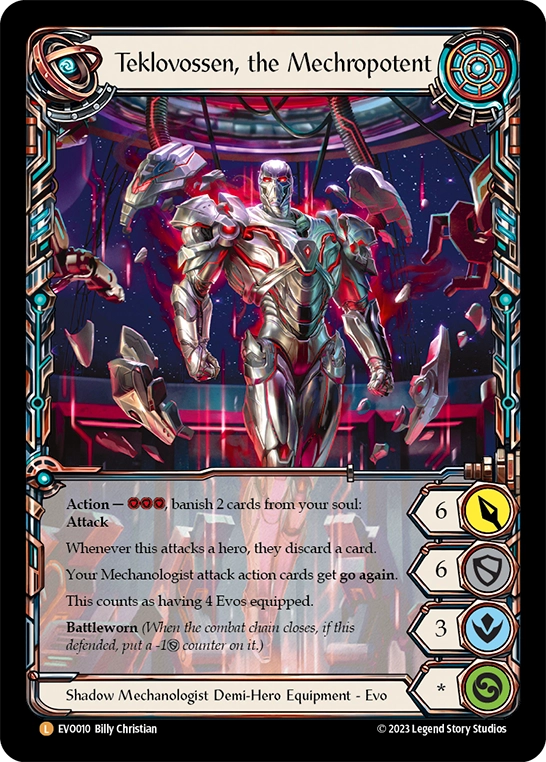
More than anything in Mechanology, Teklovossen points toward the future. His theme of self-improvement manifests uniquely as a FAB deck that gets better, not worse, as the game progresses. And when I said Mechanologists don't have Talents... well, take a look at Teklovossen's final form.
Technology in Rathe
Let's detour back to the narrative for a moment, because this is where the potential for lore in gameplay gets really interesting. Mechanically, the Shadow talent on the Demi-Hero Equipment means nothing (aside from the odd Light card that targets Shadow heroes). At first you might think Shadow is simply a callback because we've got the Soul mechanic in play once again - but Soul has been thematically tied to Light, so it'd be a sloppy callback at best.
No, I think Shadow is telling us something about Teklovossen, and about how Metrix has leaped so far ahead of the rest of Rathe, technologically. My personal theory is that Teklovossen turned to a Shadow demon for knowledge of the future, and used that understanding to push Metrix forward (while, the narrative of both Maxx and the Pits would point out, oppressing people in the name of progress).
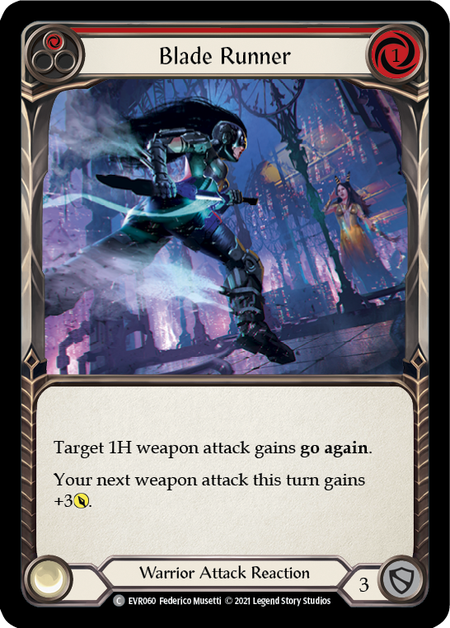
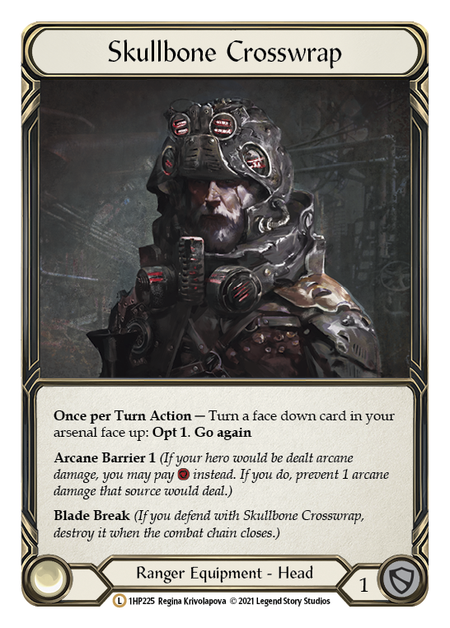
Perhaps we're not that far from Mechanologists finally breaking out of their silo. We've seen art that points to technology in other card pools - Blade Runner is a frequently cited example, or the Skullbone Crosswrap - but to me, the biggest evidence that Mechanologists are poised to play a bigger role in the story is simply that they exist, utterly incongruent and completely unresolved.
This is not a detour.
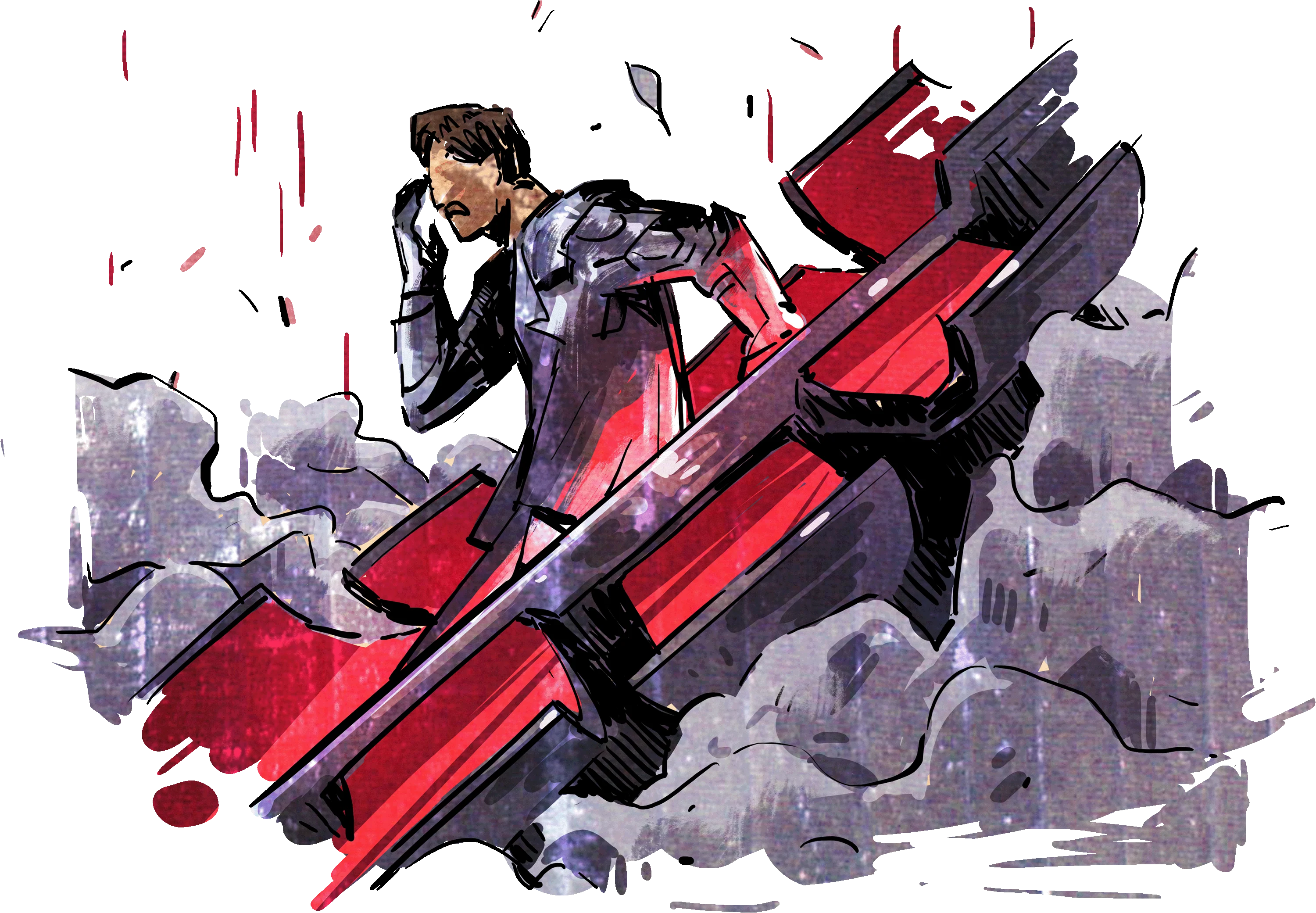
So the question is, what's the big plan for Mechanologist in this game? Is it really just the most well-supported novelty class in the game? Is it being held back for fear of its potential? Is it siloed as a design choice - one that's inadvertently made its audience extremely narrow and make it hard to dabble in? Or is LSS playing a long game with it, setting it up for a larger role in the future the way Runeblade became so much more beyond Viserai?
I no longer believe Mechanologist is a Talent, but I'm not convinced it's entirely the same as other classes either, and it's harder to put a finger on the distinction, harder to define it. I've postulated before that I believe LSS has intended narrative roles for heroes and decks, and that they intentional build a designer meta around those roles (to the degree that players ever realize the meta designers imagine). To that point, I believe that Mechanologist is, perhaps, the most narrative-shackled class in the game.
Take, for example, the way we talk about the gameplay of different classes. Guardians are fatigue heroes, Warriors live in the reaction phase, Runeblades do split damage while Wizards deal direct damage. It's hard to talk about Mechanologist mechanics without defaulting to the thematic terms, however: the Item class, 'burn through your deck to go fast', build a mech suit. There's room within the Warrior class identity to take a detour into card draw, as we've seen with Kassai, because there's more abstraction to the theme; but for Mechanologists, it all comes back to the skin we've layered over the mechanics.
And then there are the larger narrative themes of Rathe, and how Mechanologist fits into them. So far we've seen 3 major storylines emerge from the loose themes of FAB sets. The first is the battle of Light and Shadow, Solana and the Demonastary, as showcased in Monarch and Dusk Till Dawn. The second: a rebellion and coup in Volcor, told through Uprising and Dynasty. And the third, in Bright Lights, of a glistening city of promise and potential - and the rough underbelly it hides. Cautionary tales of the dangers of organized religion, oppressive government, and technology taking over.
Why was LSS willing to produce Bright Lights as a single-class set, knowing it would limit its audience? Because that fit the narrative. Because Mechanologist, as a class, can't be opened up yet - its chapter is still to come. And because FAB sets are products with long shelf lives - and they fully expect that something to come will send players back to Bright Lights when Mechanologist one day means more than it does now.




